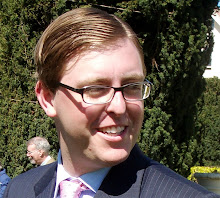O'Hanlon describes the current situation in the Congo and compares it to Darfur, where many in the United States wanted to do something and the best humanitarian assistance might have been troops on the ground providing security, but with the military stretched thin as it is by extended deployments to Iraq and Afghanistan even considering it was impossible.
He proposes creating a "peace operations division" of 15,000 soldiers, of which 3-4,000 or so would be deployed at any one time. The troops would be specifically recruited for this humanitarian division, would only serve two years, and would have more experienced officers and NCOs, including those driven away by the stupidity of "don't ask, don't tell." A more lovable, more liberal, military. The Peace Corps with guns.
It's an interesting concept, and I think encouraging a broader spectrum of young people to serve our country would benefit both the individuals and the military, but I also see some major flaws. Having a "special" force liberal interventionist troops with many gay leaders, and you want them to be less well trained and go on softer missions? Wouldn't that just reinforce stereotypes? Instead create specific training for humanitarian/peacekeeping/nation building missions for our current troops. Undertake those types of missions if they make sense to our national interest. Use various methods, including touting those missions, to recruit from a broader spectrum of young Americans. And repeal DADT. But don't create an alternative, wimpier, military for liberals and gays.




I think his analysis of the risks is shockingly naïve. To wit:
ReplyDelete"First, those volunteering would understand the risks and accept them."
Would they really understand the risks? A brief training stint on some U.S. military base is hardly going to prepare them psychologically for the rigors of potential armed conflict against irregular forces in some remote African jungle. And is the fact that they accept the risk going to mitigate the danger, or placate their families and the American public when some of them are killed?
"Second, in most civil conflicts such as Congo's, possible adversarial forces are not sophisticated."
It doesn't sound like the personnel we would be sending would be all that sophisticated either. Besides, how sophisticated would the adversary need to be in order to use their own home turf to stage ambushes and then fade back into the jungle? An African firing an AK-47 can kill Americans just as well as any Taliban fighter.
"They would largely monitor villages and refugee camps, inspect individuals to make sure they did not have illicit weapons, and call for help if they came under concerted attack."
From Neil Sheehan's account in "A Bright Shining Lie" it seems like our troops in Vietnam spent a lot of time trying to monitor villages, and that wasn't always too easy. What if these individuals they're inspecting do have illicit weapons? Are they likely to tamely submit, or fight back? And who are these troops going to call for help when under attack? Isn't the point that we're sending them instead of the regular Army? If they can't stand up in a firefight, what are they even doing there?
I don't think this idea has really been thought through, and I concur with Robin that we're better off modifying the training of our current forces than creating a whole new one.
I cringe at the thought of a Peace Corps with guns. That would negate its very purpose. The impetus behind the Peace Corps is that it is non-military and solely humanitarian. If O’Hanlon is indeed proposing the idea of a militarized Peace Corps, then this will certainly pose undue threats to non-combatants in the countries and communities in which volunteers live and work. Furthermore, dumping funding into a new entity of the armed forces is a waste of resources and frankly redundant.
ReplyDeleteWhile the U.S. is the number one provider of assessed contributions to the UN Peacekeeping budget, comprising 25.6% of it in 2008/2009, it is not even listed as one of the top 20 contributors of uniformed personnel to actual peace keeping missions. South Asia dominates in the number of personnel that it contributes (Pakistan, Bangladesh and India together commit nearly 28,500). Rather than argue for a militarized Peace Corps, O’Hanlon should make a stronger pitch to increase U.S. contributions of uniformed personnel to UN PKOs.
There needs to be a clear distinction between the carrier of the mission and its intended purpose and outcome. While PKOs and humanitarian aid activities are somewhat similar, it’s the service provider who needs to be perceived or protected differently. Rather than argue for a new initiative, we should push for higher contributions to existing institutions. As per O’Hanlon’s suggestion, I disagree and argue that the U.S. doesn’t need a “new type of military unit.”